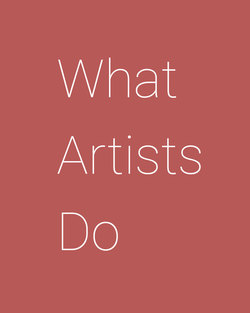Читать книгу What Artists Do - Leonard Koren - Страница 34
Оглавление34
Mid-career, Cage had an epiphany: why not create
a composition in which there are no sounds at all?
According to the artist, “[I wanted to] compose a piece
of uninterrupted silence and sell it to Muzak Co.”
(Muzak, as the company was then named, sold record-
ed “mood music” for different commercial applica-
tions, such as in elevators and department stores.)
For all his apparent emancipation from convention-
ality, Cage was afraid that if he made a piece with no
apparent sounds whatsoever people might think he
was putting them on—and he didn’t want that. Ulti-
mately, two separate but related insights provided
the conceptual grounding he needed to proceed.
The first insight came when viewing the all-white
and all-black paintings of his friend, artist Robert
Rauschenberg. At the time, monochrome paintings like
Rauschenberg’s were thought to be artistically “smart”
because they were artifacts of pure painting. That is,
they were paintings where the content and subject
